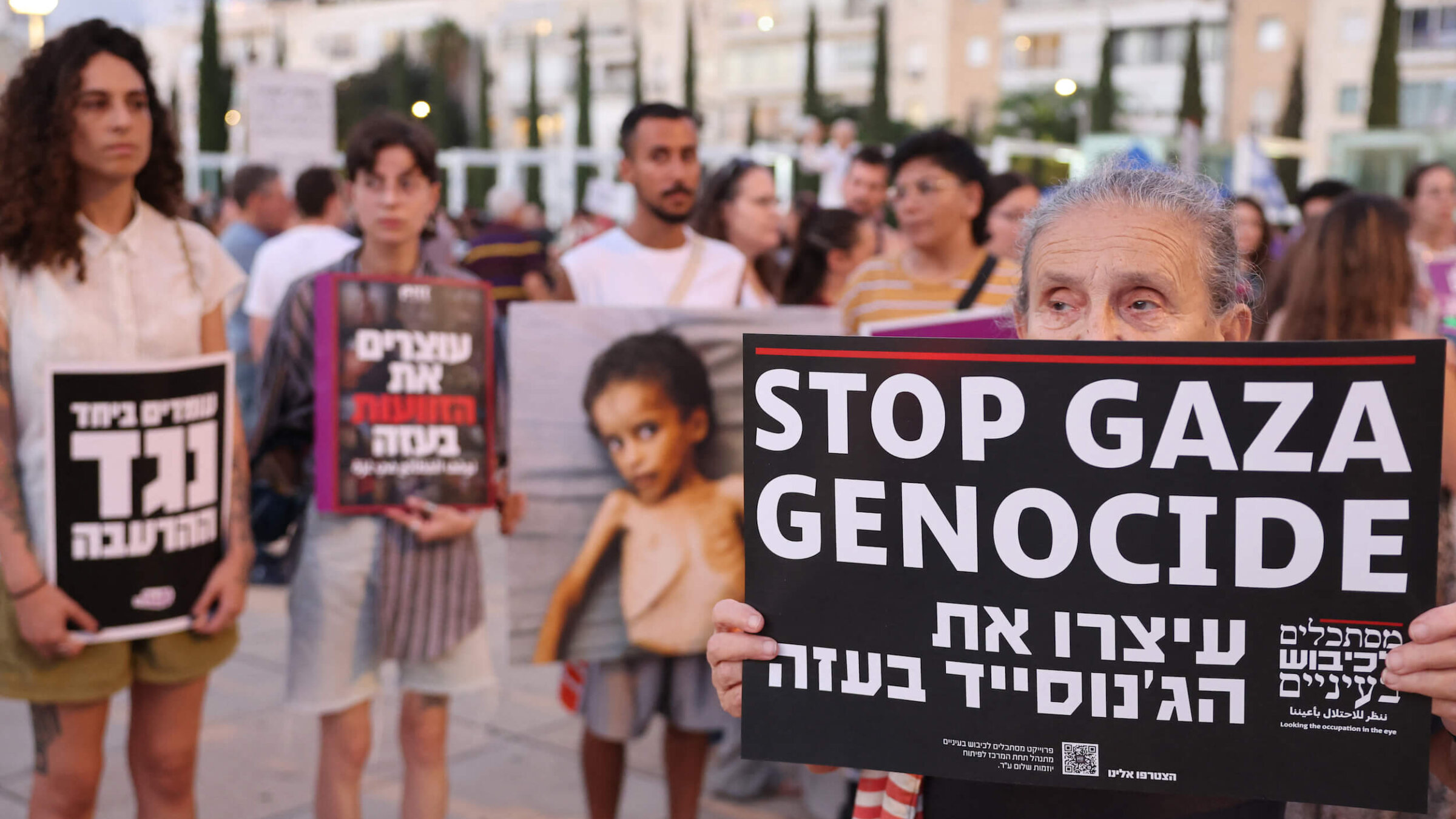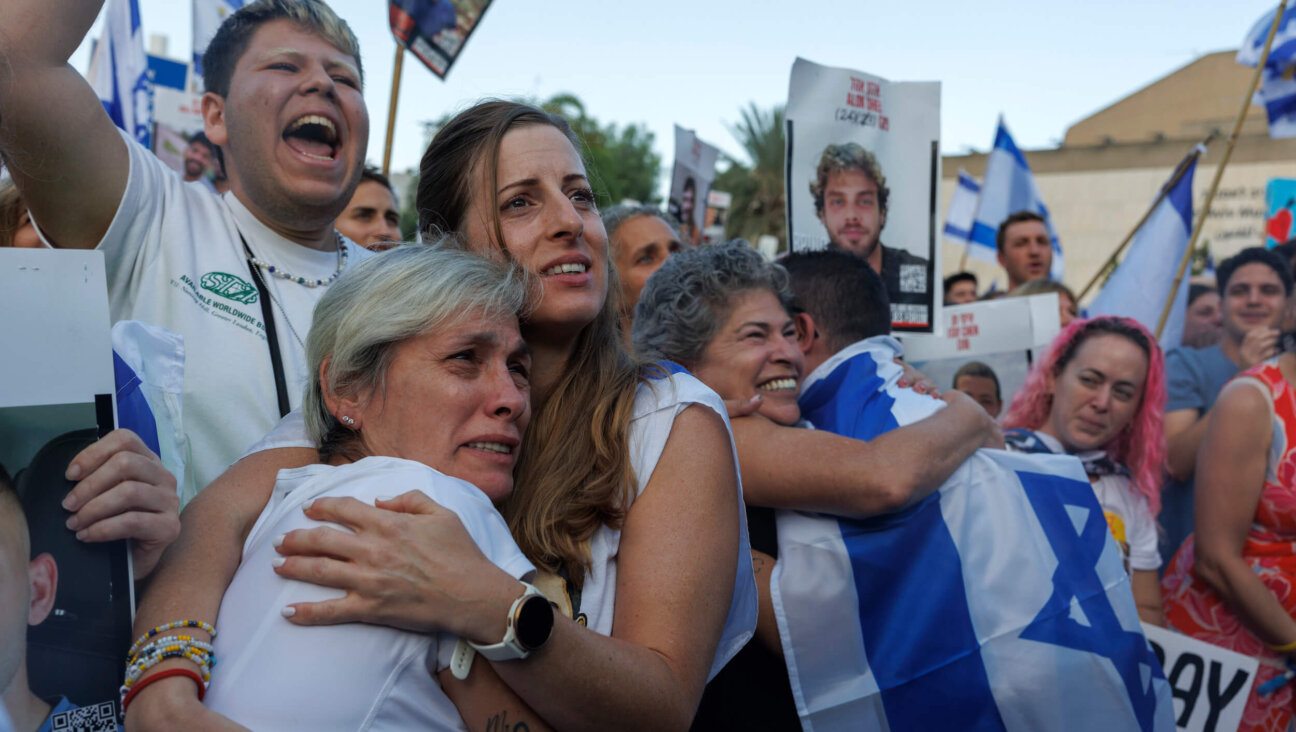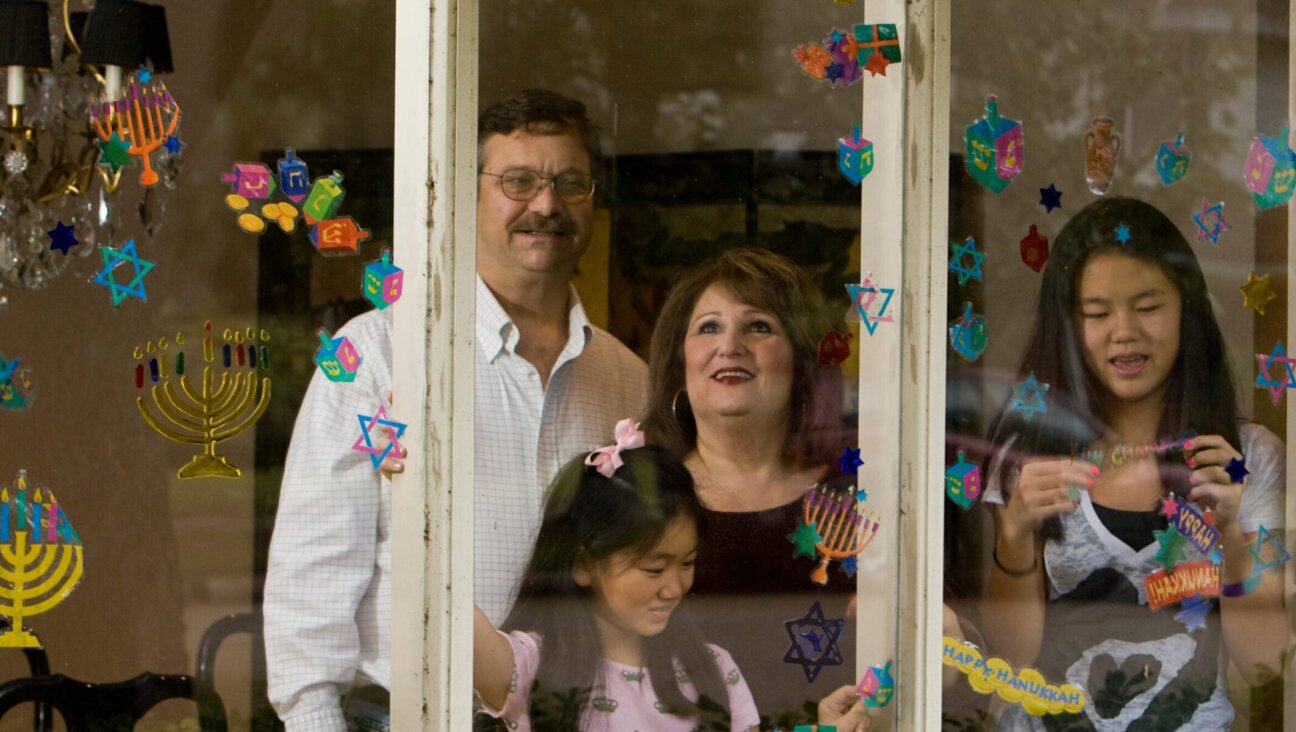The horror in Gaza is a catastrophe for Jews — this Tisha B’av must be a reckoning
We must mourn not just the violence done to us, but also that we have done to others

Demonstrators at an anti-government protest in Tel Aviv on July 31, calling for a stop to the war in Gaza and for the release of Israelis held hostage by Palestinian militants in the Gaza Strip since October 2023. Photo by Jack Guez/AFP/Getty Images
Tisha B’Av marks the saddest day of the Jewish year, a day of fasting, mourning and lamentation. This year, it will arrive on Saturday night with an added measure of grief, for we are facing one of the gravest moral crises in the history of the Jews.
Tisha B’Av typically commemorates a series of catastrophes that befell Jews, beginning with the destruction of the First and Second Temples in ancient times. Last year on Tisha B’Av, the Hamas massacre of Oct. 7, 2023, was added to the long chain of Jewish suffering, with new kinot, or poetic lamentations, composed to express the unbearable heartache of that day.
But this year is different. Jews are not the victims. We are the victimizers. And we must add the devastation of Palestinian life wrought by Israel in retribution for Oct. 7 to the list of catastrophes we mourn. The scale of that horror defies imagination. Never in our lifetime — or the lifetimes of our grandparents or great-grandparents — have we witnessed such relentless daily killing and wanton disregard for human life perpetrated by Jews against others. Perhaps never in Jewish history.
The Israeli historian Yuval Noah Harari has suggested that not since the destruction of the Second Temple in 70 C.E. has Judaism “faced a catastrophe like we are dealing with right now, which is a spiritual catastrophe for Judaism itself.” That ancient event is an anchor of the commemoration of Tisha B’Av, which recalls both the cruelty of the Roman invaders who destroyed the temple and the scourge of “sinat hinam”: baseless hatred, which, as the rabbis later maintained, enabled the cataclysm.
But other events in Jewish antiquity may be even more fitting antecedents to Gaza today.
One is the campaign directed by John Hyrcanus, the Hellenized Jewish king of the second century B.C.E., against non-Jewish residents of Samaria and Edom. Hyrcanus didn’t stop at conquering these territories. According to ancient historians, including Josephus, he demanded that non-Jews accept Jewish practices, and that the men among them be circumcised.
This, many scholars maintain, was the first and perhaps only instance of forced conversion to Judaism.
Another, better-known case came earlier, in Persia during the fifth century BCE. As the Scroll of Esther, recited annually during Purim, recounts, Jews in Persia faced and then averted the verdict of death imposed by the evil imperial official, Haman. In retribution, they “struck at their enemies with the sword, slaying and destroying” adversaries including Haman’s 10 sons before proceeding with the ultimate act of revenge: “killing 75,000 of their foes.”
The scope of this massacre — and the status of Jews as Persian subjects — raises questions about whether it actually occurred, or whether it was just a deeply ingrained revenge fantasy.
But the impulse to exact revenge on non-Jewish enemies was not limited to antiquity. There has never been a more audacious scheme than that concocted by Abba Kovner and other Holocaust survivors in 1945 to poison the water system of Germany. Their goal was to kill 6 million Germans, and thereby effect a version of biblical justice by sacrificing “a nation for a nation.”
The name of Kovner’s group revealed its motivation: Nakam, the Hebrew word for vengeance.
Mercifully, this plan was foiled when Kovner was arrested in Germany. Had he and his followers succeeded, their vengeance-driven mass murder would have become the darkest stain on the Jewish soul.
Today, we find ourselves in the throes of a state-sponsored campaign of mass Jewish violence motivated, as Israeli Prime Minister Benjamin Netanyahu announced on Oct. 7, 2023, by a drive for “mighty vengeance.”
We can no longer remain silent as this brutal campaign continues. We must cry out from the top of our lungs: Stop this daily slaughter and ongoing starvation — of children, no less!
Too many of us, including our communal and spiritual leaders, have become complicit — via indifference, willful blindness, and immoral defense of the indefensible — in what former Israeli Prime Minister Ehud Olmert called a crime of “monstrous proportions.”
The shame of inaction will not be ours alone. It will pass on to our children and to their children. What has unfolded is obviously a catastrophe for the Palestinian people. But it is also a catastrophe for the Jewish people. We must mourn our own violence as honestly as we mourn the violence done to us.
In this sense, Tisha B’Av must be different this year. It cannot focus exclusively on the misfortune that has befallen us. It must address the staggering pain we have inflicted on others. And thus, this Saturday night, we, as Jewish individuals, must commence a real and meaningful process of “heshbon ha-nefesh” — of accounting for our actions and interrogating our consciences.
In parallel, we must introduce into our communal and spiritual spaces this year a new set of practices.
First, we must name the Palestinian victims of this terrible violence, humanize them, and pray aloud for their well-being at every opportunity, just as we pray for the return of the Israeli hostages still held in Gaza.
Second, we must incorporate into our observance new liturgical forms that give voice not just to the desperate conditions of Palestinians in Gaza, but also to their core humanity. And in doing so, we should heed the request of one of the most powerful poetic voices from Gaza, Refaat Alareer, who prophetically wrote before being killed in an Israeli airstrike that “if I must die, you live to tell my story.”
And third, we must demand that our religious leaders summon up the courage to turn their gaze directly to the suffering civilians and starving children of Gaza. They must guide us in repenting for the sin of apathy. And they must reinspire in us an inviolable belief in the dignity of all human life.
These steps are necessary acts for this Tisha B’Av. They are not sufficient to bring the killing to an end. For that, we must engage in unrelenting political action to bring about a lasting ceasefire. And yet for the sake of our souls and the soul of Judaism, we must now also search within ourselves to atone for the most profound Jewish moral failing of our time.

















